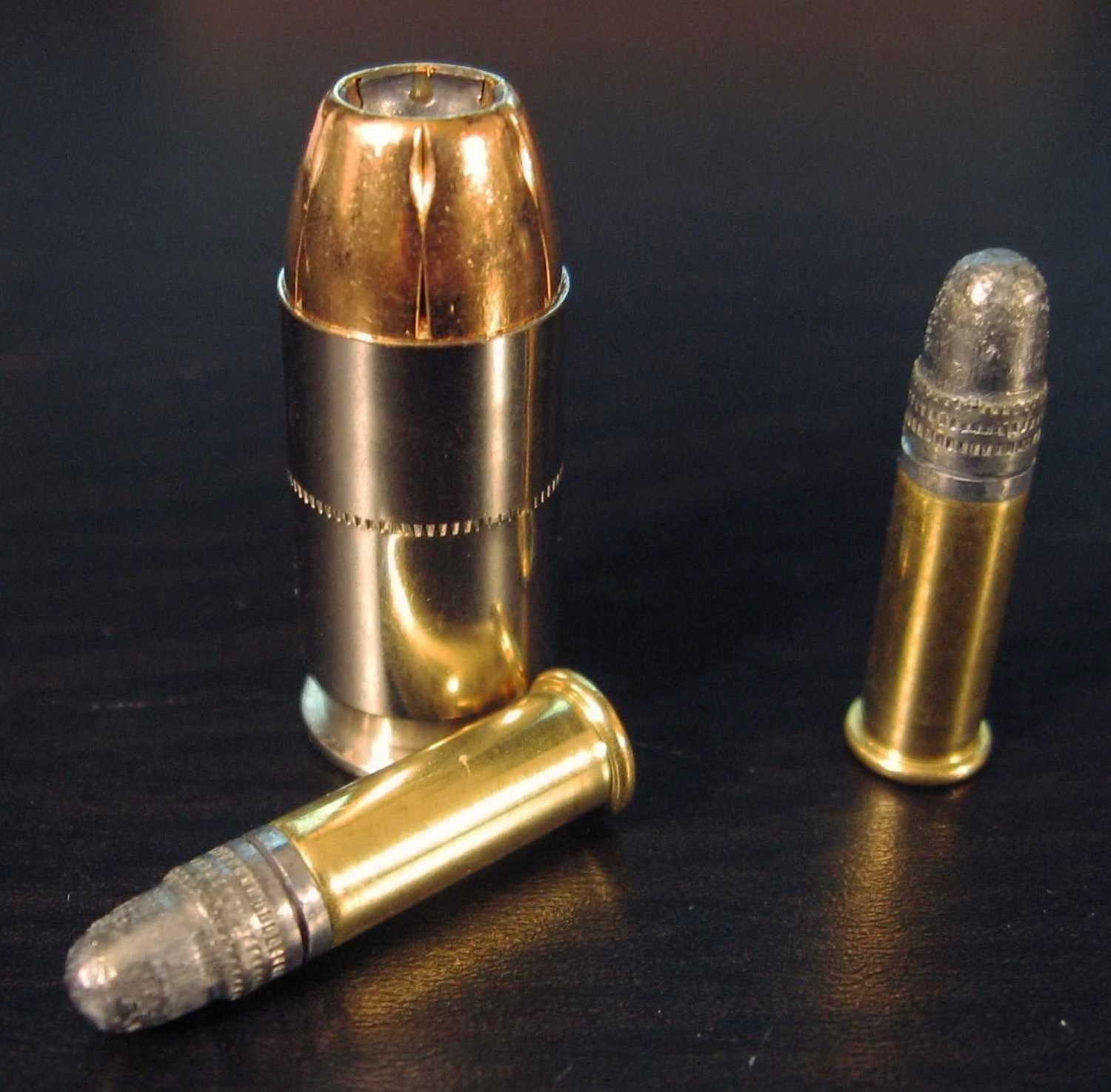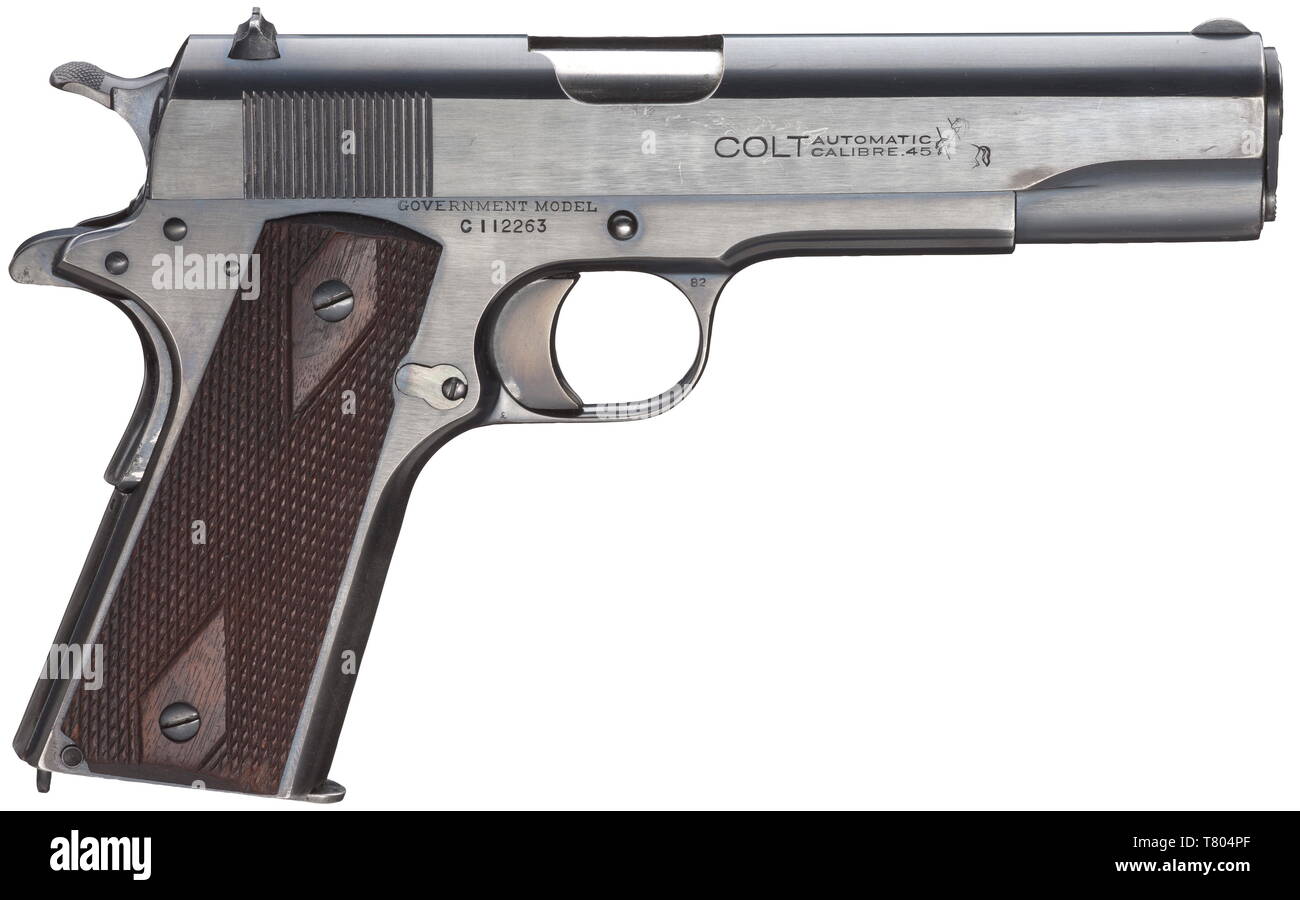45 Acp History - Is a 1904 John Moses Browning rimless pistol wall mounted for use on his model Colt semi-automatic pistol. After successful military trials, it was adopted as the standard chambering for the Colt M1911 pistol.
Moro rebellion in places like Sulu. The .38 Long Colt cartridge that was issued was found to be inadequate, prompting a search for a better cartridge. This experience and the 1904 Thompson-LaGarde Trials led the Army and Cavalry to decide that a minimum of .45 caliber was needed for the new handgun.
45 Acp History

The standard military .45 ACP cartridge uses a 230-grain (14.9 g) round-nose projectile traveling at about 830 feet per second (250 m/s) fired from the M1911A1 federal rifle. . It operates at a relatively low chamber pressure of 21,000 psi (140 MPa) compared to the 35,000 psi (240 MPa) of the 9mm Parabellum and .40 S&W, which helps extend service due to the bolt pull. is low. hands life. Because common pressure .45 ACP ammo is subsonic, fired in handguns and automatics, it is a useful caliber for suppressed weapons to eliminate sonic boom.
Auto Ordinance Tommy Gun A1 .45 Acp..photos/history/details (636cc)
Today, most NATO soldiers use sidearms chambered for the 9×19mm Parabellum cartridge, but the success of the .45 ACP cartridge has ensured its continued popularity in many sports rifles, especially in the United States. States. in 1985 the .45 ACP M1911A1 pistol was replaced by the 9mm Beretta M9 as the primary weapon of the US military, which changed in 2017. it was replaced by the 9mm SIG Sauer P320, which chose the size pistol complete M17. and M18 for compact.
A different drawing of the US Army .45 ACP "ball cartridge" for the Model 1911 pistol with dimensions in inches
In the late 19th and early 20th centuries, the US Cavalry began experimenting with replacing the .45 Colt Single Action Army (SAA) handgun with the modern .45 Colt double-action revolver.
Following the cavalry model, the Army also issued a variety of double-action revolvers chambered in .38 Long Colt. In fact, the .38 caliber cartridge was considered more effective in overall stopping power than the .45 Colt against determined opponents in cases such as the Tausug Moro juramtado soldiers who were outraged during of the Moro Rebellion.
Caliber Double Action U.s. Military Revolvers
The British had similar problems with a lack of stopping power when switching to the .303 British, which led to the development of the dum-dum bullet in an attempt to compensate for the shortcomings of the cartridge. This experience and the 1904 Thompson-LaGarde Trials led the Army and Cavalry to decide that a new weapon needed at least a .45 caliber. Thompson and Major Louis Anatole La Garde of the Medical Corps conducted experiments on corpses and animals in Chicago warehouses, and declared the .45 to be the most effective rifle cartridge. However, they noted that training is essential to ensure that a soldier can hit a vulnerable area of the body.
In 1904 Colt worked with Browning on the .41 caliber cartridge, and in 1905, when cavalrymen requested a .45 caliber equivalent, Colt changed the design of the gun to fire a larger version the prototype .41 cartridge. Colt's result was the Model 1905 and the new .45 ACP cartridge. The original round that passed the test fired a 200-grain (13g) bullet at 900 ft/s (274 m/s), but after extensive testing at Winchester Repeating Arms, Frankford Arsal, and Union Metallic Cartridge, made with a bullet weighing 230 grains (15g), launched at a specific velocity of 850 ft/s (259 m/s). The resulting .45 caliber cartridge, called the .45 ACP, was similar in performance to the .45 Schofield cartridge and slightly more powerful, although much shorter than the .45 Colt cartridge that was used by the United States Army at the time.
By 1906 proposals from six manufacturers were submitted, including Browning's design submitted by Colt. Only DWM, Savage and Colt made the first cut. DWM, which submitted two Parabellums chambered in .45 ACP, withdrew from the test after an initial test run for unknown reasons.

In the second round of testing in 1910 the Colt design passed the full test with no failures, while the Savage design had 37 stops or partial failures.
The .45 Acp: History & Performance
The cartridge/pistol combination was very successful but not satisfactory for US military purposes. Over time, many improved designs were introduced, culminating in 1911. was adopted the "1911 model Cal. 45 Automatic Pistol Cartridge," a 1.273-inch (32 mm) weighing 230 bullets (15 g). Frankford's first Arsal game was marked "F A 8 11" - 1911. August.
The cartridge was designed by John Browning Colt, but the person who had the greatest influence on choosing the cartridge was Army rifleman General John T. Thompson. After the ineffectiveness of the Army's .38 Long Colt rifle during the Philippine-American War (1899-1902), Thompson sought a more powerful rifle cartridge.
The designation "T" (experimental) is used for the experimental type of cartridge, and "M" (model) for the approved and standard type. It came in 24-round revolver ammo boxes with eight 3-round "crescent" sections (1917-1945), pre-war 20-round boxes (1911-1942), or boxes of 50-round wartime (1942-1942 perst ). The M12 and M15 cartridges were packed in 20-round boxes sealed with foil-covered paper.
45 caliber shot M12(T23) (1943-1944) was a safety round red wax paper nose with 118 No.7 1⁄2 bird groups. Issued with USAAF survival equipment
How The Us Military Adopted The Legendary .45 Acp Cartridge
The project was a little longer than a normal cycle, so the operator had to put it into action individually.
It was ejected after firing by removing the magazine, pulling the slide and pushing down the barrel until it dropped the magazine properly.
Reports indicated that the paper projectile was damp and would swell or break. It was a limited standard until it was replaced by the .45 M15 cartridge.

1 ⁄2 birds with wadding and a red cardboard disk covering the mouth of the case. It was loaded and ejected just like the M12 round.
Acp Vs 45 Gap
The .45 caliber tracer M26 (T30) has a red tip. The circuit was designed as a short-range red light for use as an emergency signal.
"S.A." means small hands. The word "z" refers to cartridges that contain nitrocellulose, not cordite.
Cartridge, S.A., pistol, .45 inch Colt Automatic, ball (1917) is the British name used for American-made bullets. The Royal Navy 1917 purchased a shipment of M1911 rifles as well as ammunition for testing, training and service. It has never been made standard in the list of changes, but it is included in the vocabulary of shopping malls. It was loaded with seven rounds and made in Winchester.
Cartridge, S.A., .45 inch, ball Mk Iz (1940-1945) was the name used for ammunition made in America and supplied with the British .45 M1911 ball. Ld-lease rifles were sold in commercial 42-round Winchester or 50-round Western Cartridge Company cartridges. The United States Army's weapons were chambered in 20-round cartridges, and in 1942. were initially converted to larger 50-round cartridges. It was never produced in Britain as it was readily available from American forces.
Ww2 German, Soviet, Allied Militaria, Uniforms, Awards, Weapons History. War Relics Forum
Cartridge, S.A., 0.45 inch ball Mk IIz (1943) was a variant issued to the Royal Navy but never entered production.
Cartridge, S.A., 0.45 inch A.C., ball (1942-1946) was the Canadian name for their domestically produced ammunition for use in the European arena. It was packed in a simple 42-round box which imitated the capacity and size of the yellow Winchester ammunition boxes sold in Great Britain under Ld-lease.
Cartridge, S.A., 0.450 inch ball Mk IIz (1943-1956) was the Australian name used for indigenously produced ammunition used in the Pacific theater. It was packed in 24 round boxes.

Cartouche de 11, 4 3mm, Pour Pistolets ("11.43 mm pistol cartridge"): Balle ordinaire ("ordinary ball") pistol cartridges. Post-war production for the use of artillery and submachine guns provided by the US as military aid. It was packed in boxes of 25 rounds.
More) .45 Acp Loads To Consider
The standard size of this cartridge is 1 to 16" (406mm), 6 grooves, Ø grooves = 0.442" (11.23mm), Ø grooves = 45" (11.43mm), cross diameter = 0.147" (3, 73). mm) and the type of cartridge is a large gun. The front of the cartridge in the housing opening at the L3 datum.
According to the decisions of the Commission internationale permante pour l'épreuve des armes à feu portatives (CIP), the .45 ACP cartridge case can withstand up to 131 MPa (19,000 psi) P.
Piezo pressure. In countries regulated by CIP, each rifle cartridge compound must withstand 130% of this maximum CIP pressure before it can be sold to consumers. This means that guns chambered in .45 ACP in CIP-regulated countries continue (as of 2016) to be pressure-tested with a 170 MPa (25,000 psi) PE piezo.
The .45 ACP is a very effective combat rifle cartridge. It combines accuracy and stopping power for use against human targets, has less muzzle flash and flash, and produces powerful but controllable handguns (even worse in compact models). .
Acp Winchester Full Patch 230gr 37rds (am466)
The standard military series .45 ACP cartridge has a 230-grain bullet traveling at a velocity of about 830 feet per second (253 m/s) fired from a government-issued M1911A1 rifle. and approx.
45 acp, 45 acp bullet mold, 45 acp shoulder holster, 45 acp leather holster, springfield 45 acp holster, 45 acp moon clips, 45 acp chest holster, 1911 45 acp history, 1911 45 acp holster, hornady 45 acp dies, 45 acp holster, history of 45 acp
0 Comments